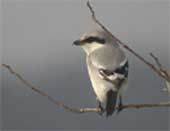 |
Rock Pigeon. |
While humans can only perceive three types of light—red, green, and blue—birds possess an additional sensitivity to ultraviolet light. In other words, compared to birds, we are colorblind.
Philipp Heeb from the University of Lausanne (Switzerland) has studied the behavior of Rock Pigeons and Eurasian Magpies, specifically how they manage food delivery to their chicks in the nest. Unable to feed all the chicks at once, how do they decide which one to feed first? Many studies have shown that mother birds identify their chicks through their movements or the sounds they make. However, Philipp Heeb discovered another signal that had previously gone unnoticed: the distribution of food varies according to the intensity of ultraviolet reflection on the chicks’ bodies.
Since the 1970s, ornithologists have known that most bird species can perceive ultraviolet light, similar to various insects, spiders, fish, reptiles, and some mammals (like rodents). The retina of birds has a fundamental difference: while humans have only three types of cone cells sensitive to red, green, and blue light, birds have an additional type of cell sensitive to ultraviolet light. Humans do not see a world as they do.
Previously, there was little research on this topic, but in the last decade, behavioral ornithologists have gained the means to study ultraviolet vision by analyzing light radiation intensity using spectrometers. The results have consistently been surprising.
Since 1996, Andrew Bennett and Innes Cuthill at the University of Bristol (UK) have demonstrated that ultraviolet vision is related to mate selection in some bird species. When they attached ultraviolet-reflective bands to male Sand Martins, they found that females preferred these birds over normal males.
Recently, several studies have shown that some bird species are able to detect prey through traces of urine that reflect ultraviolet light. This has uncovered visual information previously unimagined, explaining behaviors that can sometimes transfer to other species. In the past year, Dutch scientists made an interesting discovery: female Eurasian Magpies were more attracted to males with plumage that maximally reflected ultraviolet light. Male birds also attracted more predators, and their survival depended on their robust physical condition. Their offspring were likely to inherit these traits, leading to easier reproduction.
Philipp Heeb is interested in the parent-offspring relationship in these birds. He observed Rock Pigeon chicks: “I noticed that the edges of the beak and even the skin of the chicks reflect ultraviolet light. Thus, I think this could play a role in the recognition by the parent birds.” He and his team compared the weight gain of “normal” chicks with those reflecting ultraviolet light. The results were clear: the Rock Pigeon chicks coated with a gel that blocked ultraviolet rays gained less weight than those not coated. In other words, the “most purple” chicks received more food from their parents.
The research team suggests that these chicks might be easier for their parents to recognize in the dark nest. They also observed a correlation between ultraviolet reflectance and the chicks’ resistance to disease. Thus, this spectrum of light serves as a crucial criterion for the survival of the chicks, a visual distinction that we completely overlook.
Talented Youth




















































